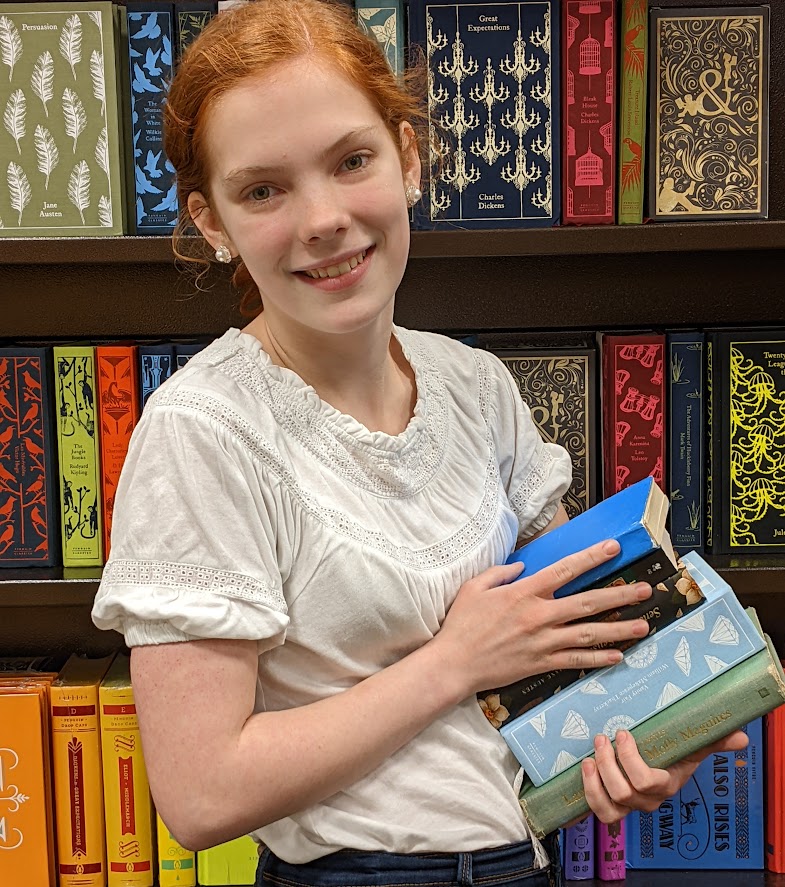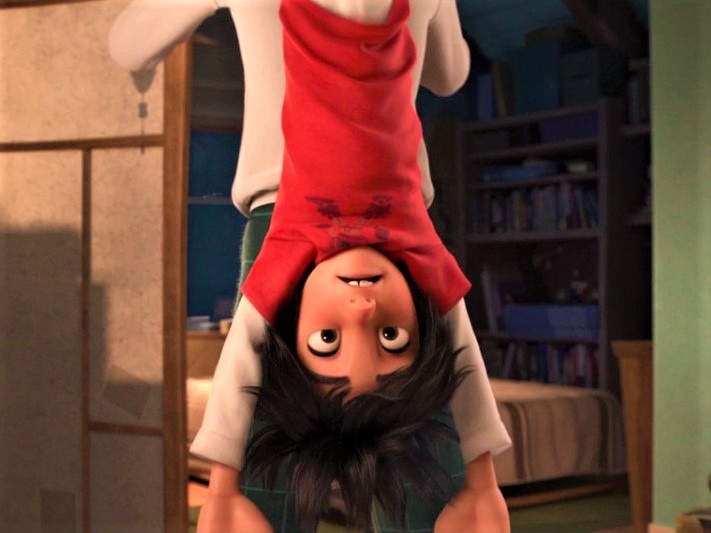Big Hero Six: The Fix for Dragging Scenes
Guest Post by Mara Scudder
Posted August 2023
Time and time again I’ve opened a chapter I’ve written only to find that it drags, that the dialogue is forced, or that it seems to lose direction. Even when there’s plenty of motivation, tons of character, and the scene is absolutely necessary to the plot, it can seem pointless or just awkward… often for no particular reason.
And this happens a lot. I’ve spent some time wondering what makes a scene so interesting… and what makes others so off. I’ve come to realize that the solution all comes down to two very important questions. And that the answer happens to come from a very specific sequence in the animated film Big Hero Six.
Big Hero Six
In Big Hero Six, Tadashi and Hiro Harmada are two teenage brothers who live in the futuristic city of San Fransokyo. Hiro is a fourteen-year-old genius. He has already graduated highschool without any effort and spends his days making a fortune off of entering his custom-build robot into illegal bot fights. He has no interest in college or life outside of the get-rich-quick-scheme he has set up for himself. He’s gotten caught by the cops a few times, but as a minor he has no reason for concern and too big of payout for him to worry too much about it.
Tadashi, on the other hand, is spending his days putting together a genius medical robot at his college. Named Bay-Max, the incredible android has almost a limitless knowledge of medical procedures and care, as well as a quirky yet inviting bedside manner. Tadashi’s fellow students are also pouring themselves into the cutting-edge technology that they are helping frontier. Even Hiro, with his careless attitude and free spirit, can’t help but be impressed by the work they are doing. When he meets the professor who invented the parts he used to construct his unbeatable robot, Hiro is sold. More than anything, he wants to enter Tadashi’s college.
Fortunately for him, an annual conference hosts tech from aspiring students all over. A contest is held, with the winner gaining a full-ride scholarship to the robotics lab. Hiro is determined — more than anything else, he is going to win that scholarship.

Here we hit the scene that I want to focus on. Hiro grabs his pencil, sharpens it to an exact point, and flips open his notebook with an enthusiasm and motivation he’s never had before and… comes up with nothing. Several hours later, he is buried in crumpled-up sketches of possible inventions, and he’s methodically beating his head against his desk.
That’s when Tadashi, calmly reading his book across the room, does something unexpected.
“I’m not giving up on you,” he declares, before grabbing Hiro and flipping him upside down. “Shake things up!” he commands, jostling Hiro around. “Look at the problem from a new angle!”
Hiro protests, grumbling a few vague excuses. Then he flops backwards, too worn out to even complain about his brother’s antics — or perhaps he already suspects what’s coming.
That new perspective (everything upside down) turns out to be just what Hiro needs. One off-handed thought about his fighter bot, and suddenly everything falls into place. He knows exactly what he needs to win that competition.
What’s so special about that scene?
I know that the series of events laid out above doesn’t seem very impressive. In fact, it isn’t. It’s pretty standard for a fun family animated movie, where a few off-handed comments send our protagonist into a brainwave from which he only emerges with a vague “You’re a genius!” as he rushes off to solve the current problem.
But there is something different about that scene.
In fact, the difference can completely revolutionize how we look at scenes that just don’t “click.”
Think about it this way — how would that scene look different if we just cut out the middle part? You know, where Hiro is surrounded by a pile of trash, banging his head on the desk and ranting about his empty brain. The writers easily could have gone straight from Hiro diving into the problem with off-the-charts motivation and an awesome montague soundtrack to an actual montage, but they… didn’t.
And what would we have missed if they had?
An awesome character moment.
That little interaction between Hiro and Tadashi showed the viewers so much more about their relationship. We already know that Tadashi has always been there for Hiro — even when he’s engaged in activities that Tadashi clearly doesn’t approve of. We’ve also seen that Tadashi sees Hiro’s potential like no one else does. He understands that Hiro could use his vast intellect and drive for efficiency to do some real good in the world, and he wants to make sure that happens.

But now we get to see that Tadashi isn’t just there to support all of Hiro’s actions unconditionally. He knows right from wrong and is often able to steer Hiro in the right direction. He also knows how to get Hiro onto the right track. He lets Hiro think for himself, but he’s always there to remind him where he should be headed — and what he’s capable of.
Meanwhile, to Hiro, Tadashi is his way of working through problems. When he doesn’t understand something and Tadashi starts acting weird, Hiro shuts up and listens, because a tiny part of him recognizes that he couldn’t fully function without Tadashi (at least in this part of the film). Tadashi is his conscience, his drive, and his ability to solve seemingly insurmountable problems. Tadashi understands parts of Hiro that even Hiro doesn’t fully get yet. A part of him realizes this and is willing to listen to what Tadashi has to say — even if he says it while dangling Hiro upside down from his knees.
See how the writers fit more than two paragraphs worth of information about their relationship into three or four lines between the characters? Opportunities like this cannot be missed, and when they are, something feels off.
Oftentimes scenes can feel forced because a character or relationship moment has been missed. Instead of showing off our characters, we offer our readers exposition. Instead of building tension by letting two characters demonstrate completely different views, we break character to force them to agree. Instead of letting a character fail and be picked up by those they couldn’t live without, we lead readers to believe that our protagonist is a Mary Sue. Ask yourself:
1. What could I show about my characters that my audience doesn’t know yet?
2. What could I show about my characters’ relationship that my audience doesn’t know yet?
Many times just asking these two questions can open up a world of solutions. Perhaps this scene needs tension to have a clear direction? Maybe you haven’t shown the stakes for one of your characters in this particular moment? Maybe your readers will find your protagonist more likable if you take this moment to demonstrate his flaw, rather than having him overcome yet another challenge with ease? Is it possible that you haven’t shown just how much two characters care about each other? Maybe if you add a shred of dialogue that demonstrates just what they have to lose in this scene, the pieces will fall into place? Should that character maybe be a little more quirky here than you’re writing him? (Even if he has to flip someone upside down to stay in character?)
These moments are almost impossible to miss. That’s why, even when you haven’t written them, something about the places where they’re supposed to fit doesn’t feel right. Something about the scene feels off because you know it has so much potential, you just have to find it.
So shake things up. Flip your scene upside down. Look for a new angle. You might be surprised by what you find.

Hi! My name is Mara, and I’m a Christian artist, violinist, and blogger. I remember the day that I decided that I would learn something new about what makes a good story from every book I picked up — whether it was good, bad, or a mixture of both! I blog at The Story Fortress as a way of sharing some of the tips and tricks I’ve learned, and highlight which books, cartoons, and movies have taught me the most about writing an awesome story.
Check out The Story Fortress (a writing blog run by Mara and her cousin Sophia) for more amazing posts on what makes a good story!
Have a topic you’d love to see written about?
Let The Storylights Team know via our contact form here.
“Flying makes me a better healthcare companion.”
– Baymax

